Jack of all trades. Partner in restoration.
Norm Beerger wasn’t always a farmer.
He’s not sure he’d consider himself one now.
The 75-year-old Philadelphia native climbed the corporate ladder for a while. He dealt cards in Las Vegas. He was a storm chaser and produced a two-hour documentary about the Grand Canyon. He also served in the Air Force.
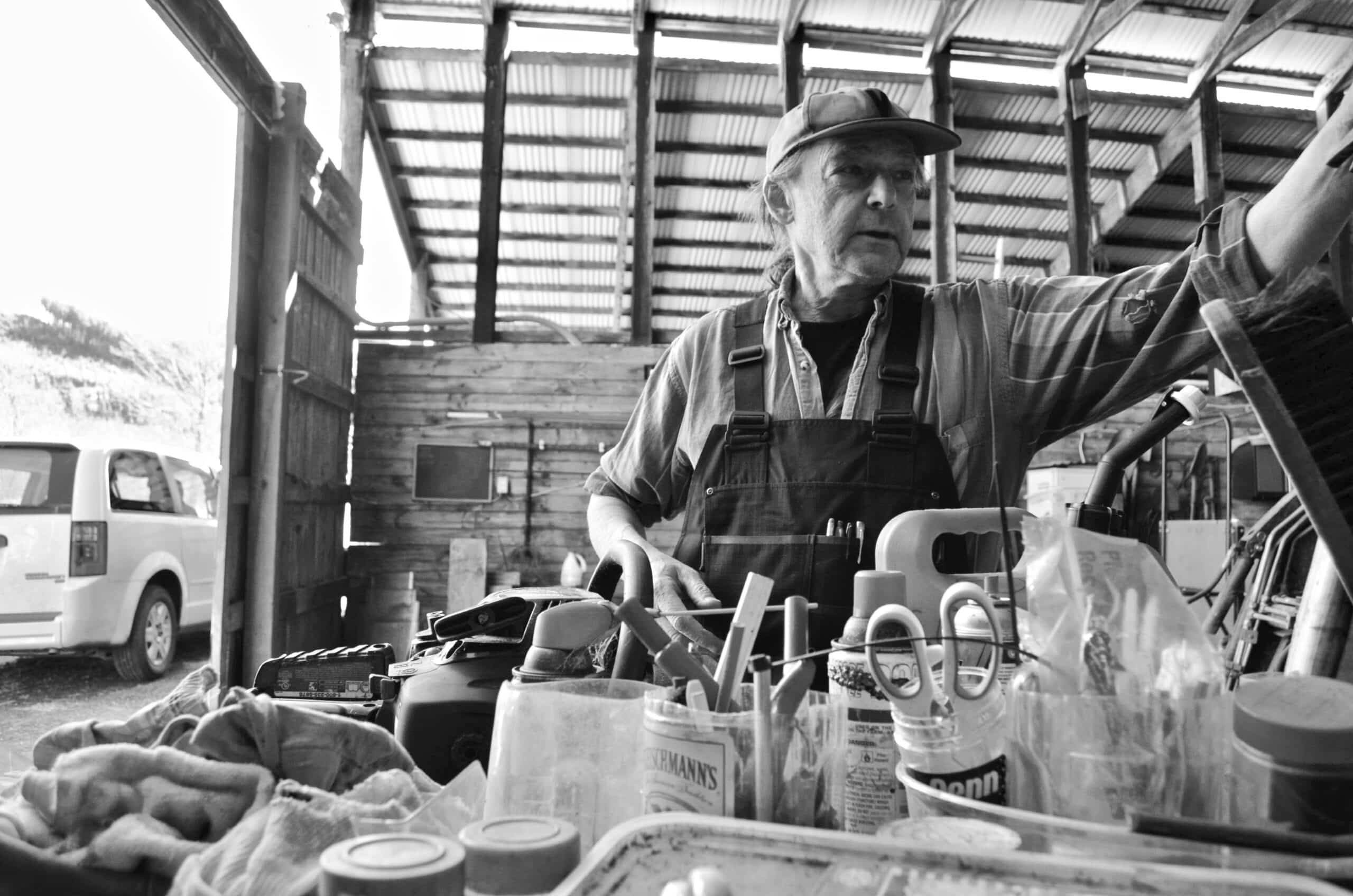
Norm Beerger working in his barn.
And then in 2008, Beerger bought a farm along the Lewis & Clark River, a 20-mile-long tributary of the Young’s River in Northwest Oregon.
“My wife and I would take a drive every Sunday on the Lewis and Clark Road,” he said. “It winds past so many farms. I started looking into buying a piece of land out there and found 190 acres for sale, but that was more than I wanted.”
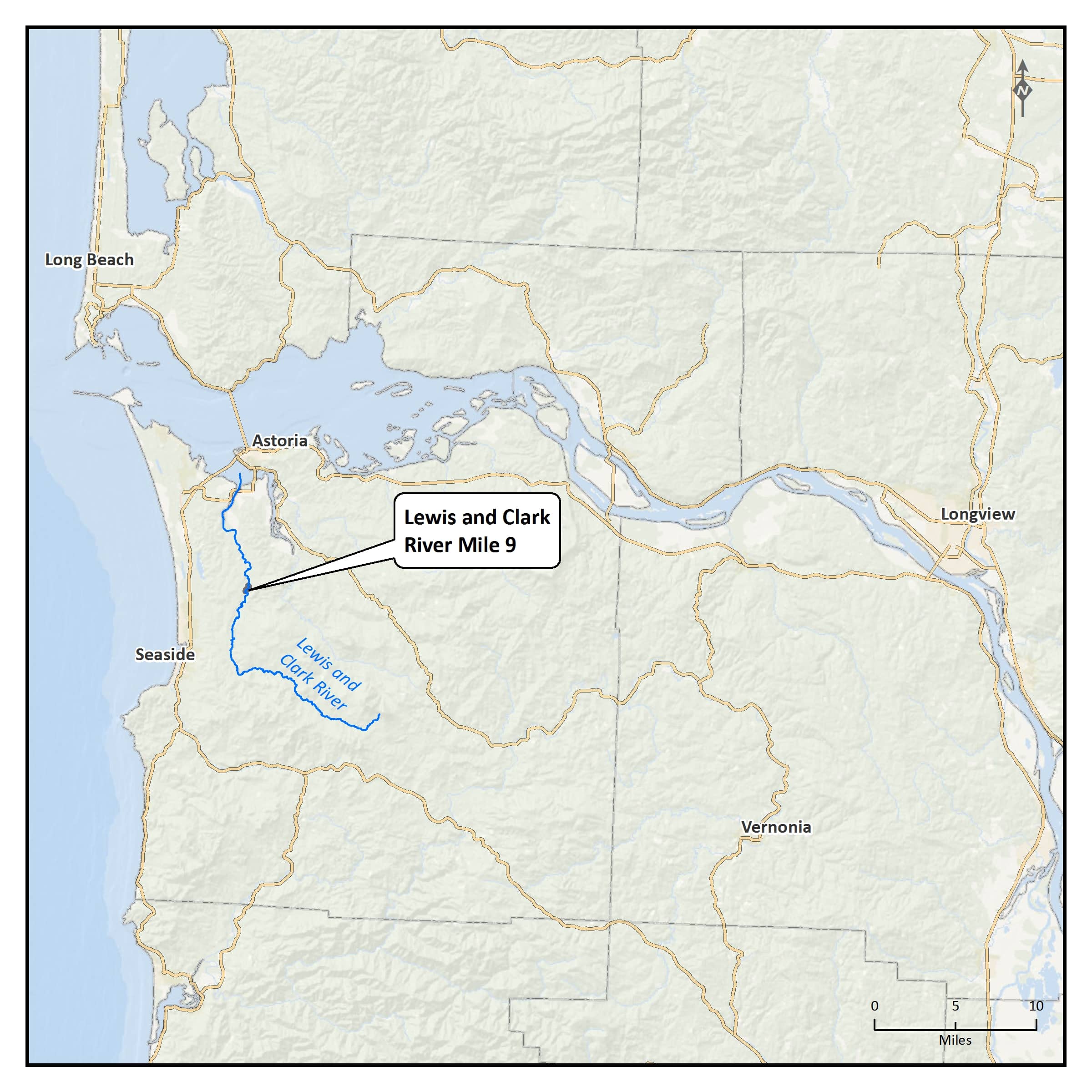
Location of restoration site.
Beerger convinced the owner to sell him 86 of those acres.
Today, he leases a portion of them to a neighbor for hay and cattle grazing. There is a small orchard with a dozen fruit trees and a hillside forest housing elk, possums, bald eagles, coyote, deer and raccoons. And along his waterfront, there are Sitka spruce, grand fir, red alder, western red cedar and Pacific willow trees.
“There was so much to be done, and I’m not a young man anymore,” he said. “I realized that if I reached out to try and get some help, together we could do a lot more good for the river and for the property as a whole.”
In 2013, TFT staff replaced four acres of invasive blackberry and other weeds with native trees and shrubs, purchased from local nurseries in Oregon and Washington.
“It was a weedy thicket that was between five and ten feet tall,” said Monique Leslie, habitat restoration project manager with TFT. “Now when you visit the site it’s still a thicket, but of a different kind, full of plants that are going to benefit the river.”
TFT implemented the restoration to offset a portion of the temperature increases caused by discharge into the Columbia River from the Port of St. Helens, approximately 70 miles north of Portland.
Using calculation methods approved by the Department of Environmental Quality, scientists concluded that planting native trees and shrubs along the riverbank could provide enough shade to offset some of the temperature impacts of the Port.
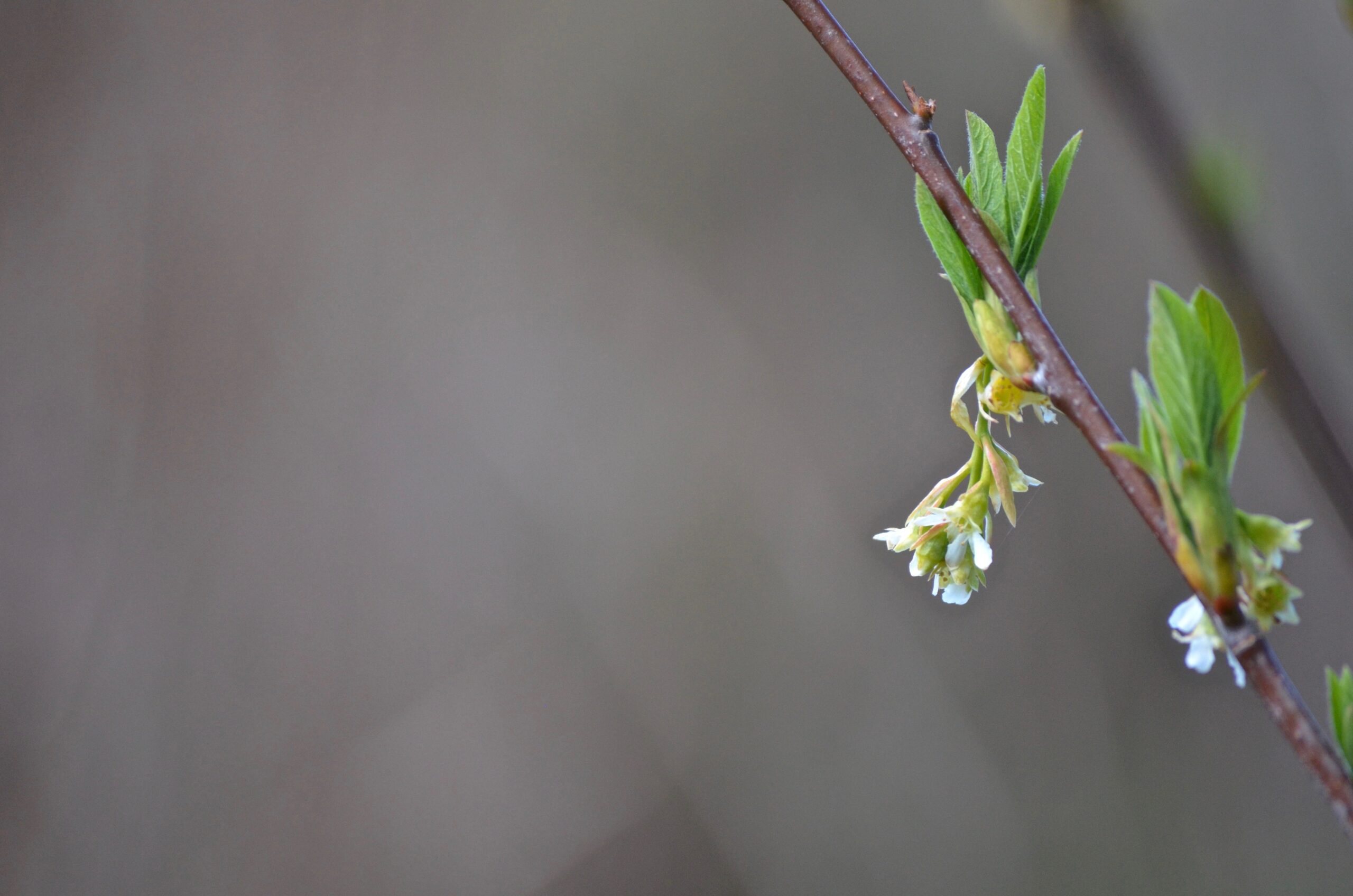
Trees planted by The Freshwater Trust beginning to bud in early Spring.
Norm is one of four landowners in the Columbia basin partnering with TFT on private restoration projects to ensure the water temperatures and river conditions remain hospitable for endangered fish.
“The Columbia and its tributaries are invaluable for salmon traveling to and from the Pacific,” said Leslie. “I suppose you could think of it like this: If one of our major highways had huge potholes and was dangerous, we’d want to fix it, right? This is similar in that we want to ensure the water quality of this river is as good as possible so it can continue to support the species traveling through it.”
In the shallows along the streamside, fins and tails of the big fish can be spotted, puncturing the water’s surface.
“We have monitoring staff coming back to the office time and time again, talking about just how beautiful the fish are,” said Leslie. “Honestly, it’s pretty motivating to look down and see one of the reasons we’re doing the restoration in the first place. Maybe it’s kind of like they’re cheering us on.”
The plants, now six years in the ground, are also helping to sequester carbon; reduce erosion, sediment and nutrients; and provide valuable habitat – and sometimes lunch or dinner – for other creatures.
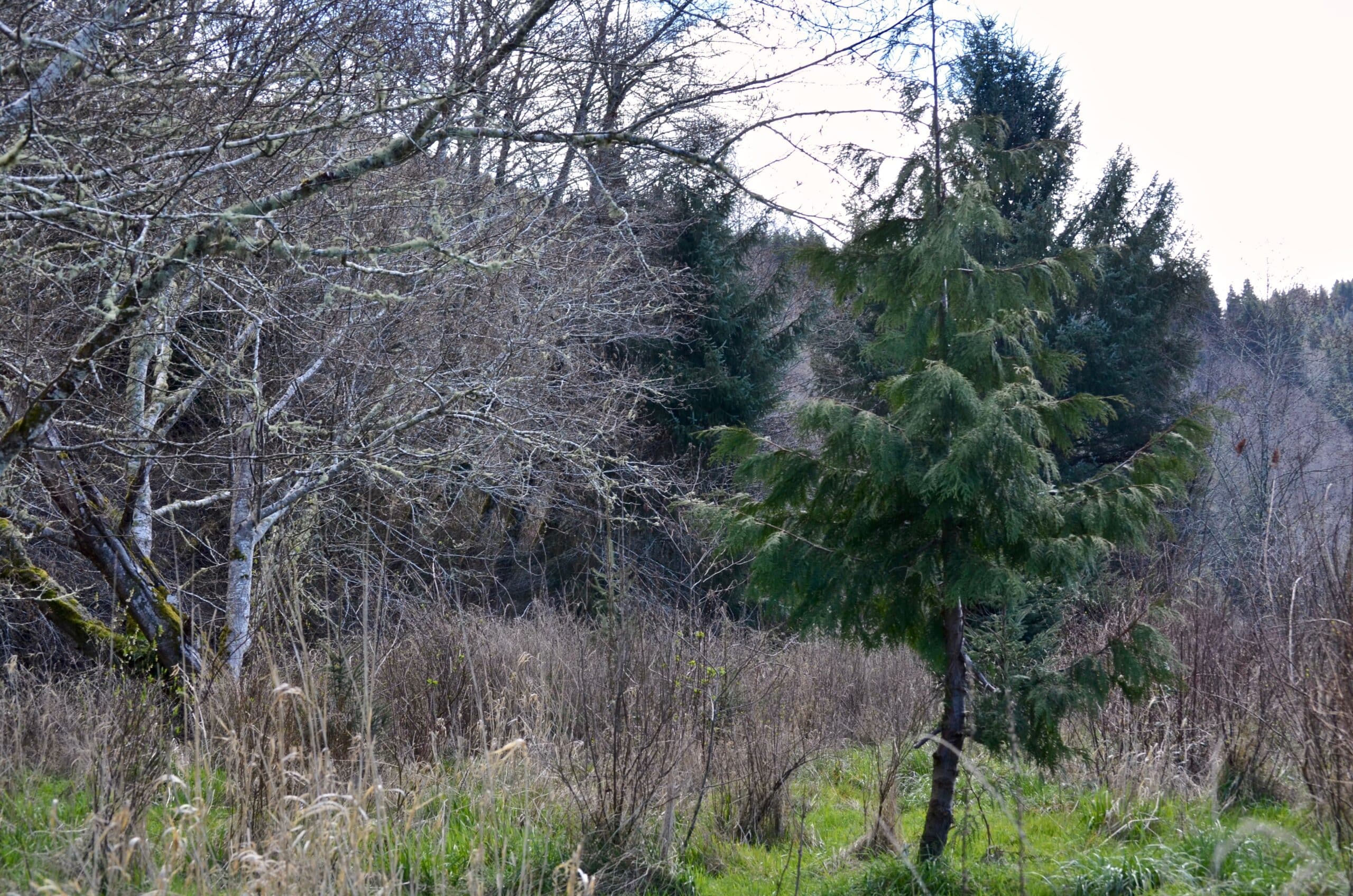
Young cedar planted by The Freshwater Trust in 2013.
“The biggest challenge is keeping these plants out of the mouths of beaver and elk,” said Olivia Duren, riparian analyst with TFT. “This site is wild in so many ways.”
Male elk bugle from Beerger’s forest and the nearby hills on late fall evenings. TFT monitoring staff has seen them, antlers tipped backward and mouths open, hoping to capture first the attention and second the heart of the females. Coyote, bald eagles, and frogs are other tenants of the area.

Male elk bugling. Photo Credit: Neal Herbert
“We’ve gotten creative about protecting the plants from wildlife. For the next several decades, we’ll have our eyes and hands on the plants, making sure the whole project is as healthy and impactful as possible,” said Leslie.
While TFT is charged with managing and monitoring the site for the next 40 years, Beerger has permanently dedicated his waterfront to conservation. And he refuses to harvest the wood in his forest.
“People come to me all the time and tell me, ‘Oh you could make a lot of money,’” he said. “I’d rather leave it just like it is, where I can see it.”
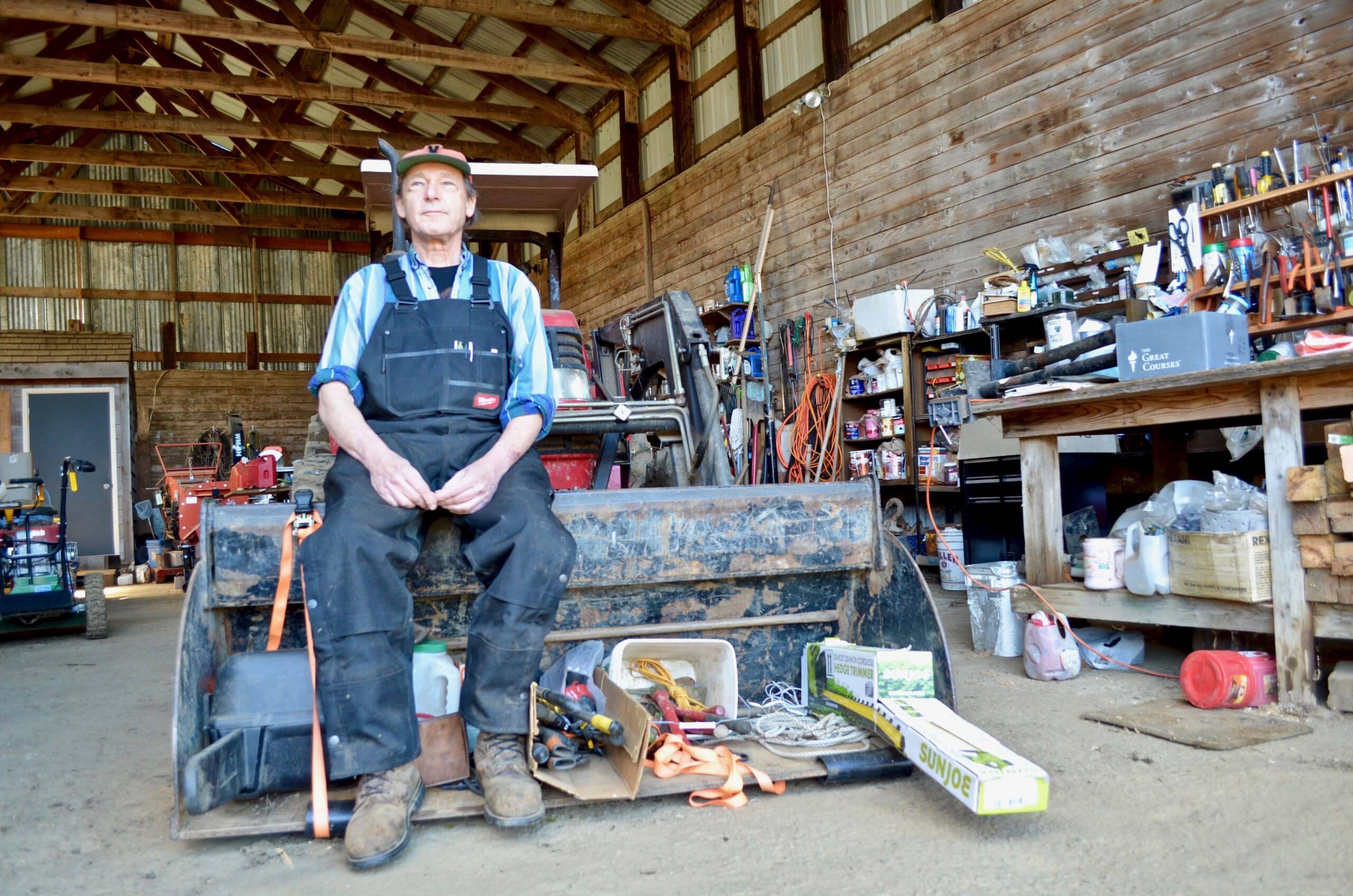
Norm & his tractor in the barn that sits along Lewis & Clark Highway
Beerger sees the farm three days a week.
“I get both my exercise and a good dose of nature about every other day,” he said. “Seeing how this site looks now, with all the alder and spruce providing a beautiful environment for all the creatures, gives me a warm feeling in my heart.”

His passion for making a difference and his stories of storm chasing and filmmaking have made the project a staff favorite.
“Norm dedicated literally all of his waterfront property to conservation,” said Leslie. “His commitment to it is inspiring and we’re lucky to have him as a partner.”
The feeling is mutual.
“I feel honored to have you guys on the property,” said Beerger. “I gave you the palette and you are painting the picture. That’s just such a pleasure.”
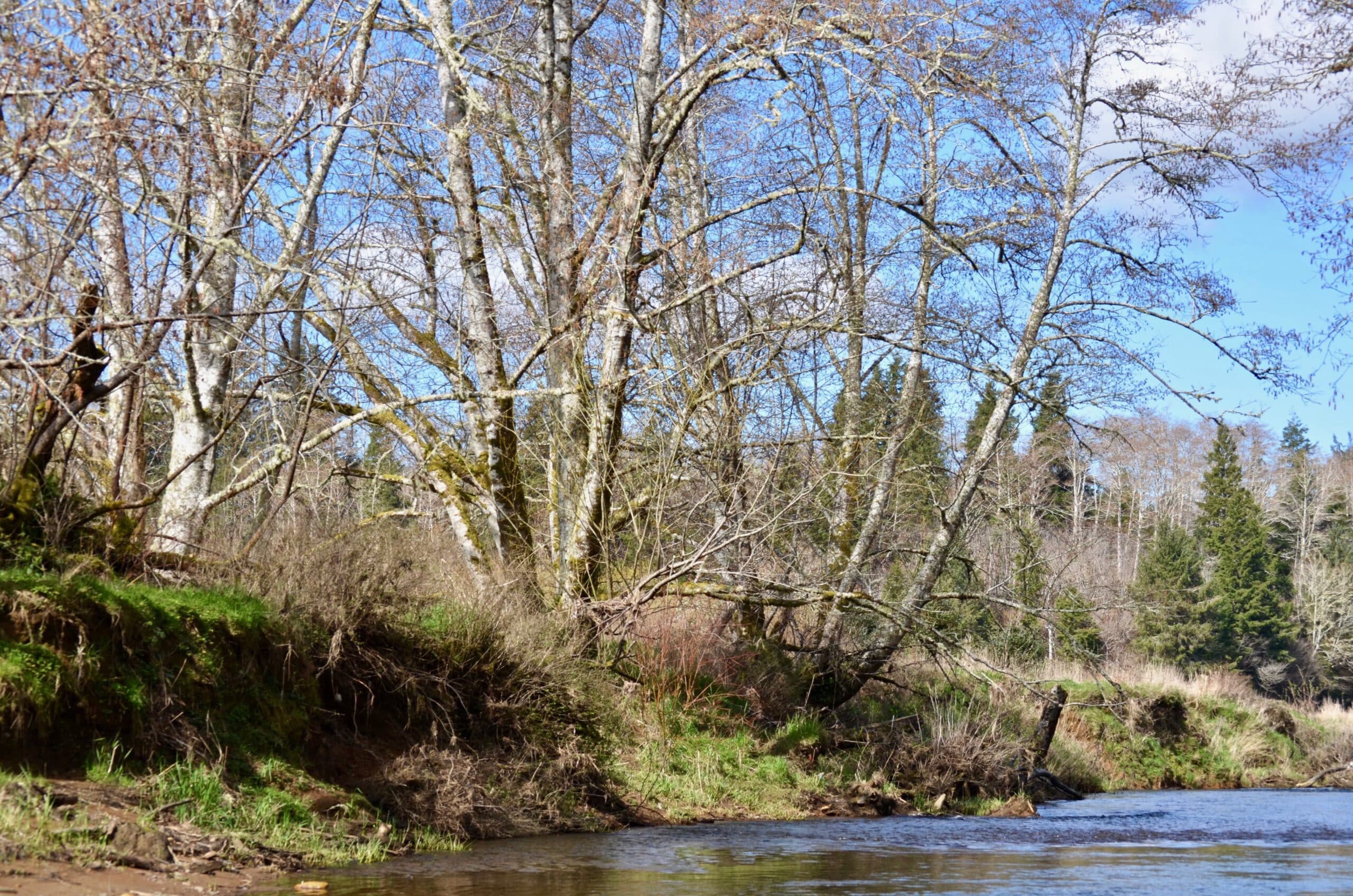
Norm's property along the Lewis & Clark River
Enjoying Streamside?
This is a space of insight and commentary on how people, business, data and technology shape and impact the world of water. Subscribe and stay up-to-date.
Subscribe- Year in Review: 2023 Highlights
By Ben Wyatt - Report: Leveraging Analytics & Funding for Restoration
By Joe Whitworth - Report: Transparency & Transformational Change
By Joe Whitworth - On-the-Ground Action – Made Possible By You
By Haley Walker - A Report Representing Momentum
By Joe Whitworth

